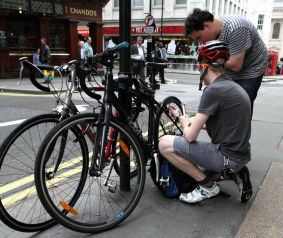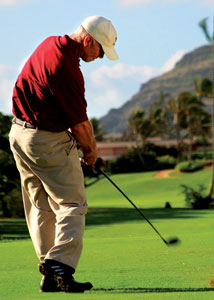Over rotating
Question
I'm in high school and I started diving off a 1m springboard, and I'm having problems controlling the power I get off the board, in any dive I do, because I get really high, and end up over-rotating and getting
nice bruises on my back. Is there tips for controlling my height, and not over-rotating?
I'm a junior in high school, in varsity diving, and I started late August this year. The dives that I end up over-rotating are 101 B, 101C, 201 C, 401 B, and 401 C. My coach says that I need to slow my opening from the
position a bit, but I never seem to get it. Is there anything that I'm missing?
Answer
Hi Sarah -
Thank you providing the information I need to help you on your high school diving. I will go through each of the dive numbers/positions one at a time so you can figure out how to do these dives better.
The first thing I need to tell you are some basic facts about springboard diving:
1. Legs create height.
2. Arms create rotation.
3. The higher you go the slower you will rotate because height takes away from rotation. The opposite is also true: the less you use your legs and the more you use your arms the faster you will rotate.
4. Using your trunk to rotate will cause uncontrollable rotation.
5. Using your stomach muscles to control dives is very necessary.
6. The angle of your take off will greatly effect the amount of rotation created. If you lean way forward on front group dives, you will create unwanted over rotation. This is also true for back dives, if you fall way back and then push strong, you will flip way over.
7. The fulcrum setting and type of board you are using also effects the control you have in a dive. I am assuming that you use a "Duraflex" diving board. If it has holes in the tip (called a cheeseboard)you are then on the springiest board there is. If it does not have holes, it is still a good board, just not as bouncy.
101C - If you are over rotating on this dive, you are probably leaning too far forward upon take off. You could also be throwing too hard to create rotation. This dive requires very little arm throw to rotate half way. If you are having this trouble, try doing the dive standing instead of with an approach and hurdle.This way, you can work on a more straight up take off and not one that leans way forward. When you come out of the tuck, kick your feet in the area that is behind you instead of straight up. This will help you line up the entry "short' of vertical instead of over.
101B - Same as 101C. If you are having a problem with leaning too far on take off - do it standing. Use an arm circle and try to stand straight up off the board and not use a hard arm throw. When you do it right, you will see the tip of the board underneath you. Remember - diving boards throw you out. Your job is to try and take off more vertically. When you want to come out of the pike position, do it slowly like your coach says. You will be able to do this by making your stomach muscles really tight.You also need to keep your back straight. If you are very "arched" on this dive, you will probably go over. Lift your legs slowly to an area that is not all the way up, but slightly short of vertical.
201C. On this dive, a good drill to do is some simple back jumps straight and tuck, if you are too far out, work on landing closer to the board (3 to 4 feet). When you practice the actual dive, find out if you are falling/leaning way back and if you are, this is most likely the reason you are going over. The combination of leaning and then doing the tuck position results in unwanted over rotation. If you do not have this problem, then you are probably pulling your shoulders upon take off. As I stated above, if you use your trunk on take off, you create more rotation than is needed to go just half way. When you kick out of the tuck, kick your feet in the direction of the board above and in front of you. Not straight up to vertical. After you kick out, look for the water and then reach your hands for the water you are going to dive through. If you reach too much for the water, you probably still go over.Practice the dive more simply. This will help you line up the dive short of vertical.
I hope this helps you figure out what you want to do. It would be easier for me to help you if I had a video tape of these dives but this service does not provide for that.
Good luck with your high school season.
Tom Trapp
401C. This really the same as a 101C, you are just facing the other way. If you are going over on this dive then you may be too close to the board. In this group, the farther away you are from the board, the slower you will rotate. Check to see if you distance is correct as stated above. You do not need to throw your arms hard and when you kick out, kick you feet in the direction opposite the board (the other end of the pool) and try to line up your entry short of vertical.
N.B.. Same idea as 401 C and then use you stomach muscles tightly to raise your legs slowly to a point that is short of vertical
switching from gymnastics into diving
safety


